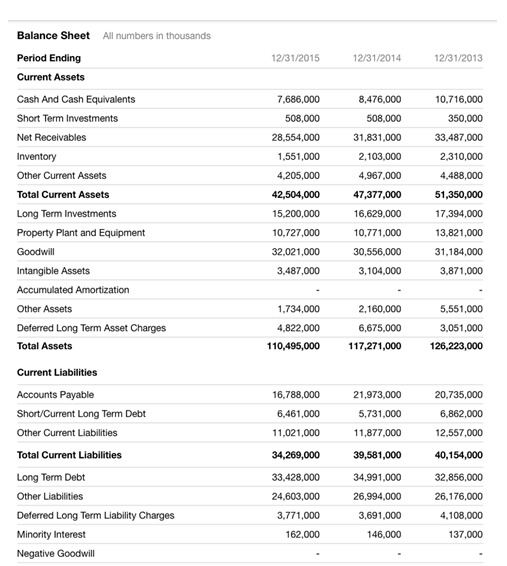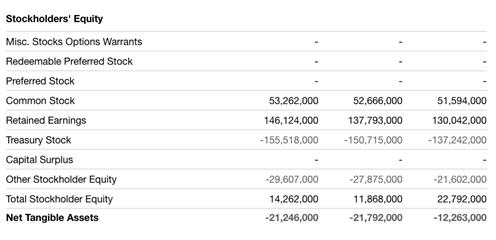You have just been hired by Internal Business Machines Corporation (IBM) in their capital budgeting division. Your first assignment is to determine the free cash
You have just been hired by Internal Business Machines Corporation (IBM) in their capital budgeting division. Your first assignment is to determine the free cash flows and NPV of a proposed new type of tablet computer similar in size to an iPad but with the operating power of a high-end desktop system. Development of the new system will initially require an initial capital expenditure equal to 10% of IBM's Property, Plant, and Equipment (PPE) at the end of fiscal year 2014. The project will require an additional investment equal to 10% of the initial investment after the first year of the project, a 5% increase after the second year, and a 1% increase after the third, fourth, and fifth years. The product is expected to have a life of five years. First-year revenues for the product are expected to be 3% of IBM's total revenue for the fiscal year 2014. The new product's revenues are expected to grow at 15% for the second year then 10% for the third and 5% annually for the final two years of the expected life of the project. Your job is to determine the rest of the cash flows associated with this project. Your boss has indicated that the operating costs and net working capital requirements are similar to the rest of the company and that depreciation is straight-line for capital budgeting purposes. Since your boss hasn?t been much help (welcome to the ``real world"!), here are some tips to guide your analysis:
1. Obtain IBM's financial statements. (If you really worked for IBM you would already have this data, but at least you won't get fired if your analysis is off target.) Down load the annual income statements, balance sheets, and cash flow statements for the last fiscal years from Yahoo! Finance (finance.yahoo.com). Enter IBM's ticker symbol and then go to ``financials."
2. You are now ready to estimate the Free Cash Flow for the new product. Compute the Free Cash Flow for each year using Eq. 8.5: Free Cash Flow=(Revenues-Costs-Depreciation) x(1-T) + Depreciation-Capital Expenditure-Change in Net Working Capital Set up the timeline and computation of free cash flow in separate, contiguous columns for each year of the project life. Be sure to make outflows negative and inflows positive.
a. Assume that the project's profitability will be similar to IBM's existing projects in 2014 and estimate (revenues-costs) each year by using the 2014 EBITDA/Sales profit margin. Calculate EBITDA as EBIT + Depreciation expense from the cash flow statement.
b. Determine the annual depreciation by assuming IBM depreciates these assets by straight-line method over a 5-year life.
c. Determine IBM's tax rate by using the income tax rate in 2014.
d. Calculate the net working capital required each year by assuming that the level of Net working capital will be a constant percentage of the project's sales. Use IBM's 2014 net working capital/sales to estimate the required percentage. (Use only accounts receivable, accounts payable, and inventory to measure working capital. other components of current assets and liabilities are harder to interpret and not necessarily reflective of the project's required net working capital- for example, IBM's cash holdings.)
e. To determine the free cash flow, deduct the additional investment and the change in net working capital each year.
3. Use Excel to determine the NPV of the project with a 12% cost of capital. Also calculate the IRR of the project using Excel's IRR function.
4. Perform a sensitivity analysis by varying the project forecasts as follows:
a. Suppose first year sales will equal 2%-4% of IBM's revenues.
b. Suppose the cost of capital is 10%-15%.
c. Suppose revenue growth is constant after the first year at a rate of 0%-10




Income Statement All numbers in thousands Revenue Total Revenue Cost of Revenue Gross Profit Operating Expenses Research Development Selling General and Administrative Non Recurring Others Total Operating Expenses Operating Income or Loss Income from Continuing Operations Total Other Income/Expenses Net Earnings Before Interest and Taxes Interest Expense Income Before Tax Income Tax Expense Minority Interest Net Income From Continuing Ops Non-recurring Events Discontinued Operations Extraordinary Items Effect Of Accounting Changes Other Items Net Income Net Income Preferred Stock And Other Adjustments 12/31/2015 81,741,000 41,057,000 40,684,000 5,247,000 19,748,000 15,689,000 724,000 16,413,000 468,000 15,945,000 2,581,000 162,000 13,364,000 -174,000 13,190,000 12/31/2014 92,793,000 46,386,000 46,407,000 5,437,000 22,438,000 18,532,000 1,938,000 20,470,000 484,000 19,986,000 4,234,000 146,000 15,751,000 -3,729,000 12,022,000 12/31/2013 98,367,000 49,683,000 48,684,000 5,743,000 22,629,000 20,312,000 333,000 20,646,000 402,000 20,244,000 3,363,000 137,000 16,881,000 -398,000 16,483,000 Cash Flow All numbers in thousands Period Ending Net Income Operating Activities, Cash Flows Provided By or Used In Depreciation Adjustments To Net Income Changes in Accounts Receivables Changes In Liabilities Changes In Inventories Changes in Other Operating Activities Total Cash Flow From Operating Activities Investing Activities, Cash Flows Provided By or Used In Capital Expenditures Investments Other Cash flows from Investing Activities Total Cash Flows From Investing Activities Financing Activities, Cash Flows Provided By or Used In Dividends Paid Sale Purchase of Stock Net Borrowings Other Cash Flows from Financing Activities Total Cash Flows From Financing Activities Effect Of Exchange Rate Changes Change In Cash and Cash Equivalents 12/31/2015 12/31/2014 12/31/2013 13,190,000 12,022,000 16,483,000 3,855,000 4,492,000 4,678,000 2,407,000 2,121,000 -1,232,000 812,000 1,270,000 -1,407,000 59,000 -1,111,000 -235,000 133,000 -39,000 -57,000 -3,448,000 -1,886,000 -747,000 17,008,000 16,868,000 17,485,000 -3,579,000 -3,740,000 -3,623,000 -629,000 -923,000 -798,000 -3,952,000 1,662,000 -2,904,000 -8,159,000 -3,001,000 -7,326,000 -4,897,000 -4,265,000 -4,058,000 -4,287,000 -12,970,000 -12,785,000 19,000 1,783,000 6,961,000 -9,166,000 -473,000 -790,000 -15,452,000 -655,000 -2,240,000 -9,883,000 28,000 304,000 Balance Sheet All numbers in thousands Period Ending Current Assets Cash And Cash Equivalents Short Term Investments Net Receivables Inventory Other Current Assets Total Current Assets Long Term Investments Property Plant and Equipment Goodwill Intangible Assets Accumulated Amortization Other Assets Deferred Long Term Asset Charges Total Assets Current Liabilities Accounts Payable Short/Current Long Term Debt Other Current Liabilities Total Current Liabilities Long Term Debt Other Liabilities Deferred Long Term Liability Charges Minority Interest Negative Goodwill 12/31/2015 7,686,000 508,000 28,554,000 1,551,000 4,205,000 42,504,000 15,200,000 10,727,000 32,021,000 3,487,000 1,734,000 4,822,000 110,495,000 16,788,000 6,461,000 11,021,000 34,269,000 33,428,000 24,603,000 3,771,000 162,000 12/31/2014 8,476,000 508,000 31,831,000 2,103,000 4,967,000 47,377,000 16,629,000 10,771,000 30,556,000 3,104,000 2,160,000 6,675,000 117,271,000 21,973,000 5,731,000 11,877,000 39,581,000 34,991,000 26,994,000 3,691,000 146,000 12/31/2013 10,716,000 350,000 33,487,000 2,310,000 4,488,000 51,350,000 17,394,000 13,821,000 31,184,000 3,871,000 5,551,000 3,051,000 126,223,000 20,735,000 6,862,000 12,557,000 40,154,000 32,856,000 26,176,000 4,108,000 137,000 Stockholders' Equity Misc. Stocks Options Warrants Redeemable Preferred Stock Preferred Stock Common Stock Retained Earnings Treasury Stock Capital Surplus Other Stockholder Equity Total Stockholder Equity Net Tangible Assets 53,262,000 52,666,000 146,124,000 137,793,000 -155,518,000 -150,715,000 -29,607,000 14,262,000 -21,246,000 -27,875,000 11,868,000 -21,792,000 51,594,000 130,042,000 -137,242,000 -21,602,000 22,792,000 -12,263,000
Step by Step Solution
3.26 Rating (167 Votes )
There are 3 Steps involved in it
Step: 1
To determine the free cash flows and the net present value NPV of the proposed tablet project for IB...
See step-by-step solutions with expert insights and AI powered tools for academic success
Step: 2

Step: 3

Ace Your Homework with AI
Get the answers you need in no time with our AI-driven, step-by-step assistance
Get Started


